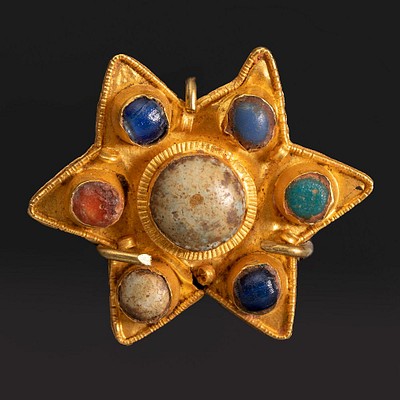Workshop of ACISCLO ANTONIO PALOMINO Y VELÁSCO (Bujalance, Córdoba, 1655 - Madrid, 1726). "Immaculate Conception. Oil on canvas. Relined old.
Lot 86
About Seller
Setdart Auction House
Carrer Aragó 346
Barcelona
Spain
Setdart Subastas was born in 2004 and is currently the first online art auction in Spain with solidity, prestige and reliability guaranteed by our more than 60,000 users. Setdart has a young, dynamic and enterprising team ready to successfully manage the purchase and sale of art works through custom...Read more
Estimate:
EUR€10,000 - EUR€12,000
$10,526.32 - $12,631.58
Absentee vs Live bid
Two ways to bid:
- Leave a max absentee bid and the platform will bid on your behalf up to your maximum bid during the live auction.
- Bid live during the auction and your bids will be submitted real-time to the auctioneer.
Bid Increments
| Price | Bid Increment |
|---|---|
| EUR€0 | EUR€10 |
| EUR€200 | EUR€25 |
| EUR€500 | EUR€50 |
| EUR€1,000 | EUR€100 |
| EUR€3,000 | EUR€200 |
| EUR€5,000 | EUR€500 |
| EUR€10,000 | EUR€1,000 |
| EUR€20,000 | EUR€2,000 |
| EUR€50,000 | EUR€5,000 |
About Auction
By Setdart Auction House
Dec 21, 2021
Set Reminder
2021-12-21 07:30:00
2021-12-21 07:30:00
America/New_York
Bidsquare
Bidsquare : Córdoba: 2,000 Years of Art
https://www.bidsquare.com/auctions/setdart-auction-house/c-rdoba-2-000-years-of-art-8049
Setdart Auction House sofia@setdart.com
Setdart Auction House sofia@setdart.com
- Lot Description
Workshop of ACISCLO ANTONIO PALOMINO Y VELÁSCO (Bujalance, Córdoba, 1655 - Madrid, 1726). "Immaculate Conception. Oil on canvas. Relined old. Presents frame of the twentieth century, following models of the seventeenth century. Measurements: 181 x 132 cm; 209 x 160 cm (frame). This work has great similarities with the painting of the same subject, made by Palomino around 1712, which belongs to the collection of the Prado Museum. The way in which the Virgin is arranged, the gesture and the garland of flowers, which is located in the lower area, next to the angels, are aesthetic characteristics that can be appreciated in both paintings. However, in this work the palette presents metallic tonalities that merge with the warm gradations. We see in this painting a representation of the Immaculate perfectly framed within the Spanish seventeenth century, marked at stylistic and iconographic level follows the models established in the Baroque. We see Mary dressed in white and blue (symbols of purity and the concepts of truth and eternity, respectively), surrounded by standing child angels. Some angels carry symbols of the litanies, such as the lilies or the palm, and over Mary's head we can see the Holy Spirit in the form of a dove, alluding to the Immaculate Conception. Due to its characteristics of style and form, we can relate this work to the hand of Acisclo Antonio Palomino, painter and one of the most outstanding baroque art treatises. Palomino trained in Córdoba under the direction of Juan de Valdés Leal. He traveled to Madrid in 1678, and there he was introduced into the circle of Carreño de Miranda and Claudio Coello, who brought him into contact with the royal collections and gave him the opportunity to produce his first works for the court, which allowed him to obtain the title of painter to the king in 1688. The arrival of Lucas Jordán in Madrid in 1692 made him interested in the fresco technique, becoming one of the most important Spanish fresco painters of the second half of the 17th century. Between 1697 and 1701 he worked in Valencia, and in 1705 he traveled to Salamanca to carry out a religious commission. Between 1712 and 1713 he painted a series of canvases with scenes and saints related to the history of Cordoba for the cathedral, and between 1723 and 1725 he worked on what would be his last work, the decoration of the tabernacle of the Carthusian monastery of El Paular in Granada. Ordained a priest when he was widowed in 1725, he is now especially known as a writer and art theorist, thanks to his work "El museo pictórico y escala óptica" (1715-24). Palomino is widely represented in the Prado Museum, as well as in numerous Spanish churches and museums throughout Spain.
- Shipping Info
-
In-house shipping available. Please inquire at admin@setdart.com.
-
- Buyer's Premium



 EUR
EUR CAD
CAD AUD
AUD GBP
GBP MXN
MXN HKD
HKD CNY
CNY MYR
MYR SEK
SEK SGD
SGD CHF
CHF THB
THB

















